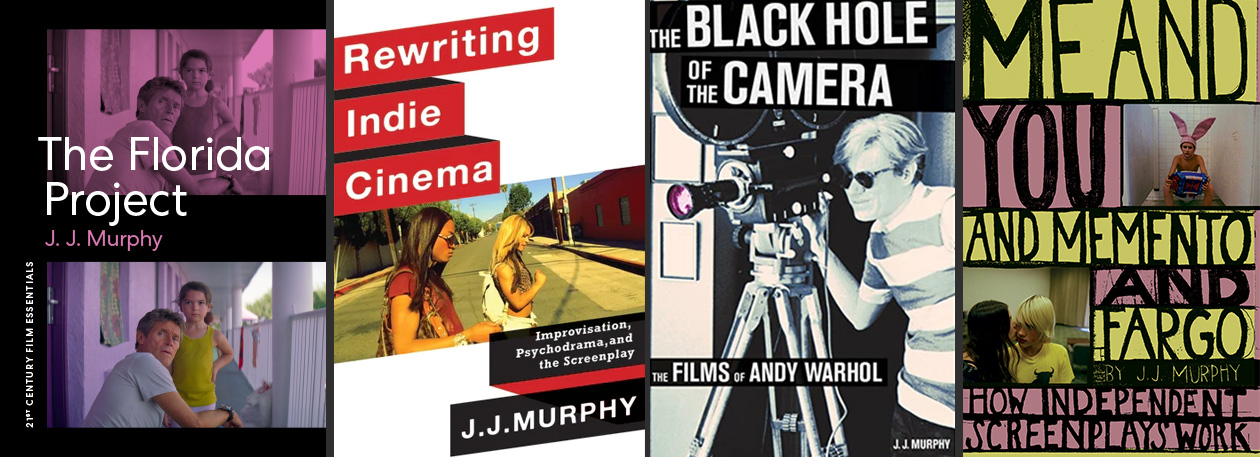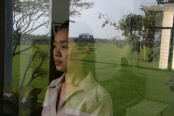

Apichatpong Weerasethakul has almost single-handedly brought Thai cinema to international prominence with a series of enigmatic experimental narrative films. A graduate of the film program of School of the Art Institute of Chicago, Weerasethakul is one of the most rigorously formal filmmakers working today, making him a staple on the festival circuit as well as in both art and film magazines. Syndromes and a Century played at the 2006 New York Film Festival, but it has had only a very limited theatrical run. It’s playing on October 18 at 7 PM as the inaugural film in the Spotlight Film and Video Series at the Madison Museum of Contemporary Art (MMoCA), curated by Eric Crosby. Syndromes and a Century is an absolute gem, and surely ranks among the very best films of the year. For this reason, this one-time 35mm screening – the Madison and Wisconsin premiere of the film – is a cinematic event not to be missed.
Syndromes and a Century purportedly tells the story of Weerasethakul’s parents – both doctors – before he was born. His re-imagining of their earlier lives takes a odd form, because the narrative, much like in his previous films, Blissfully Yours (2002) and Tropical Malady (2004), is split into two halves. The first part takes place in a medical clinic in a rural setting, while the second half repeats the opening scenes in an urban, high-tech hospital complex, but presents them from another camera angle, alters the dialogue, and substitutes an entirely different character and diagnosis. Some of the characters from the first half reappear in the second. Several are literally the same, but others have changed. I can’t rationally explain either the film’s structure or its aberrations, which remain one of the many mysteries of Syndromes and a Century.
The film’s whimsical irreverence managed to get Weerasethakul in trouble with the Thai censors, but I’m not sure American audiences will completely understand the reasons. They mainly have to do with such things as one of the male characters getting an erection, Weerasethakul’s portrayal of Buddhist monks, and his depiction of a female doctor drinking on the job as a means for coping with her anxiety about having to appear on weekly public television.
The film opens with a shot of trees rustling in the wind. An attractive young female doctor, Dr. Toey, interviews a new colleague, Dr. Nohng, for a job. While the interview questions initially sound routine, they’re actually completely weird, such as asking about his drawing skills or what DDT stands for. It’s hard to imagine hiring practices based on questions that seem like they might have been written by Harmony Korine. In fact, much of the dialogue is so unusual, inspired, and full of non sequiturs that it makes most movie dialogue appear dull and pedestrian by comparison. Some of it is patently absurd, such as when Dr. Nohng claims to prefer playing the position of center in basketball because you don’t have to be tall, or when the male doctor at the start of the second half tells the elderly monk to stop eating so much chicken because it’s full of cholesterol.
There are three plotlines: one involves Dr. Toey, who works at the medical clinic; another concerns a singing dentist; while the third has to do with Dr. Nohng. In Dr. Toey’s case, it turns out that a persistent, love-struck suitor proposes marriage. He approaches her during lunch one day with a kind of forlorn and uninhibited desperation we tend to associate with Miranda July. Dr. Toey’s response is to hint that she’s already in love with someone else. But in the long flashbacks we see – in which Dr. Toey visits a man who owns an exotic orchid farm – the issue remains unresolved. When the orchid farmer coyly indicates to Dr. Toey that he’s fallen in love, it’s not totally clear that he’s talking about her. And, in fact, we never really find out the answer for the simple reason that this story line get sidetracked, and because Weerasethakul hasn’t the least bit of interest in either narrative development or closure.
The second plotline is even more way out there. This involves a young monk, Sakda, who has ambitions to be a DJ or own a comic-book store. He goes to the dentist for the first time, only to have the dentist sing a song to him while he works on his teeth. If the eroticism of the scene persists as a subtext, the two meet again after the dentist performs publicly on stage. We expect the dentist to bare his soul. He does, rather awkwardly, but the scene and the dialogue veer off in an almost surreal direction involving the dentist’s sense of guilt over his brother’s childhood death for which he feels responsible. At the point where the dentist finally asks Sakda whether, he is, in fact, the reincarnation of his deceased brother, I nearly fell off my chair. The monk’s response is equally mind-boggling. He tells the dentist that he couldn’t possibly be his brother because he wasn’t human in his previous life. The dentist gives Sakda a copy of his latest CD, but the monk suddenly is called away, abruptly ending both the scene and this particular story thread.
The monks themselves defy any preconceptions I’ve ever had of them. In one of the early scenes, an elderly monk, who has tortured chickens as a child, discusses being haunted by dreams in which chickens tell him they want to see him suffer. In the middle of this discussion, Dr. Toey excuses herself in order to ask a colleague to repay a loan. After she returns, the elderly monk tells the doctor that he senses confusion in her heart. He then gives her an herbal potion to help regulate her menstrual flow. Huh? The monk then tries to get the doctor to give him a batch of prescription drugs for everyone at the temple. When Dr. Toey refuses, he insists that he knows she has the power to do this if she wanted. The giddy and absurd humor of Syndromes and a Century is considerable, but it’s completely deadpan in its delivery. It is beautifully contained by the formal rigor of Weerasethakul’s stunning camera movement, long takes, and wide-shot compositions that distance us from the characters. The languid pace of his scenes gives the impression that the performers have all the time in the world.
The third plot thread occurs in the film’s second half, where the focus shifts from Dr. Toey (who is seen sitting at her desk and lost in reverie) to Dr. Nohng, who appears to flirt with one of the male patients in a hallway scene that echoes the one of the dentist. His girlfriend, however, visits him at work. She wants him to move with her when she gets a job transfer, but Dr. Nohng seems reluctant despite the fact that she gets him sexually aroused. We later see her run out of his office and Dr. Nohng follow after her, while the camera remains fixed on the empty white corridor bathed in cool fluorescent light.
Weerasethakul’s film involves narrative incident, but has only the slight semblance of plot. Just at the moment you expect the suppressed narrative to kick in, Syndromes and a Century is just as apt to get diverted into a more purely experimental visual passage involving the hospital’s duct-work, equipment, and ventilation pipes, such as occurs later in the modern hospital, which is largely filmed in the section where they build prosthetic limbs. The passage ends with a close-up on the black hole of the strangely-shaped ventilation pipe, which mirrors the eclipse that occurs in the first half of the film during the scene where Dr. Toey and another woman discuss love and relationships. Early in the film, there’s a scene where Dr. Toey and a colleague head out of the room. The camera follows their action, but only up to a point. It settles on the landscape outside the window instead, leaving actors as offscreen, disembodied voices. During the same scene, the opening credits appear over the shot of the landscape. After awhile, the actors, who assume they’re no longer being filmed, fall out of character and converse among themselves.
Of all of Weerasethakul four features – Mysterious Object at Noon (2000), Blissfully Yours, and Tropical Malady – Syndromes and a Century is his most accessible film, as well as his best. Although Syndromes and a Century is firmly rooted in art cinema, there’s a unique and special quality about the film, as if we’re watching events occur in some alternate universe. The seemingly magical and buoyant tone of Syndromes and a Century – its combined sense of both humor and wonder – is what makes the film seem unlike anything you’ve ever seen before.
Other events in the Spotlight Film and Video Series include video programs by Paul Chan, Michele O’Marah, and John Bock, as well as a special Saturday screening of Ken Jacobs’s epic Star Spangled to Death (2004). For additional information on the series, click here.